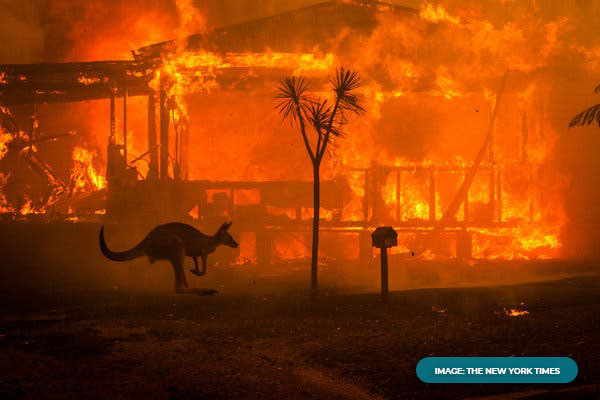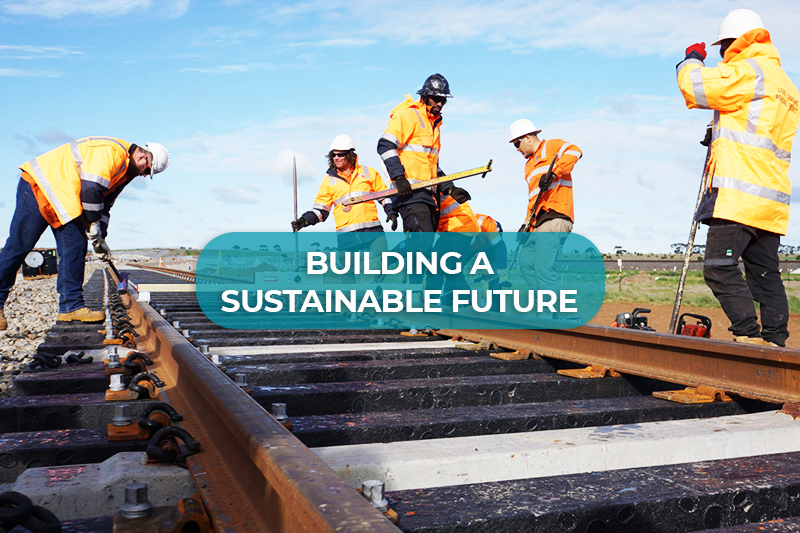The summer experienced by Australia over the last few months appears to have shaken the nation to its core. While time will only tell if the bushfires of 2019/2020 prove to be a seminal turning point for change, at a minimum, they have provided a very vivid insight into what the future looks like if we are not able to adequately prevent the catastrophic impact related to climate change, and how much work is required to improve our resilience and adaptive capacity to predicted short and long-term changes.
Climate change, like many sustainability issues, has been traditionally siloed off to be considered ‘just an environmental issue’. One thing the Australian summer fires have clearly demonstrated is the connection and interdependence of the natural environment, human wellbeing, community livelihood and economic productivity. The fires have impacted people’s health and wellbeing, all essential services, food supply chains, the operational viability of businesses large and small, our land and water-based ecosystems and people’s access to housing and shelter. It has also elevated the importance of our culture and sense of community and just how critical it is for government, business and communities to work together. The impacts from this event due to its scale, extent and duration, have been felt in the areas directly impacted by the fires, across the nation, and touched almost every part of the globe.

Figure 1. A kangaroo rushes past a burning house in Lake Conjola, New South Wales.
Working in the infrastructure sector, it has also been made abundantly clear the critical role infrastructure plays in enabling people’s lives, communities, economy and the environment. The significance of infrastructure in ensuring the resilience of communities, regions and cities, cannot be understated. Critical road access has been affected for days, wide-scale electricity grid black-outs and essential drinking water supplies compromised. The normal functioning of hospitals, schools and airports has been impacted. Public and open spaces are unusable and even hazardous.
The asset loss is significant with value estimated in the billions. The community fabric shaken but not irreparably, as Australians will always find a way, even though the grief for the loss of life and our cherished natural environment is deep and likely to linger for many years to come. This tragedy is not without its silver linings though, the sense of community and generosity of spirit and contribution has been overwhelming. The strength and determination to carry-on, is truly inspiring. The growing groundswell to act now and not accept these circumstances as the new business-as-usual, promising, and perhaps encouraging if, as a global community, we do in fact learn and genuinely act now.
 Figure 2. ADF crews clearing the route into Mallacoota.
Figure 2. ADF crews clearing the route into Mallacoota.
For the infrastructure industry, now is the time to deeply reflect and learn from the many lessons this crisis has brought into stark focus. Most critically we need to respond with resolve and urgency on how we plan, how we invest, where we build, the policies we set forth and standby unwaveringly. In short, how quickly we choose to change will define our collective future.
While New Year’s Eve was a more sombre event than usual in Australia, it saw the arrival of another milestone – a new decade and the start of a ten-year countdown for us to collectively achieve the UN Sustainable Development Goals (SDGs). Once the dust and ash has settled, the connection between the two events should not go unnoticed. The Australian summer fires provide a preview for the world how much is at stake if we fall short of achieving these goals, and, if we are unable to make the changes required, the amount of adaptation required to become resilient enough to survive and thrive in the future. The time for intention is over, the time for impact is now.
When adopting and responding to the SDGs, working strategically has been as interpreted as working narrowly. It isn’t uncommon to see organisations, private and public, sell themselves short by identifying or choosing only a few of the SDGs to focus on. What the fires have proven is that it is almost impossible for any of the goals to sit in isolation– they impact each other, influencing overall levels of vulnerability, resilience and success. This understanding is particularly important for the current custodians of infrastructure’s long-term asset base and key enabler.
 Figure 3. ISCA directly contribues to 15 of the 17 UN Sustainable Development Goals.
Figure 3. ISCA directly contribues to 15 of the 17 UN Sustainable Development Goals.
The Infrastructure Sustainability Council of Australia (ISCA) is a not-for-profit peak body operating in Australia and New Zealand with the purpose of enabling sustainability outcomes from all infrastructure. ISCA own and administer the Infrastructure Sustainability (IS) Ratings Scheme, an industry-wide standard for planning, design, construction and operations of infrastructure assets. ISCA has certified a total of 74 projects worth a collective AUD$52 billion; with AUD$106 currently underway.; The IS Rating Scheme has been recognised by Stanford University as the most comprehensive infrastructure sustainability standard globally. IS Rating Scheme aligns and directly integrates 15 of the 17 SDGs, and, depending on the specific context of an asset has the ability to impact all 17.
One of the key benefits our stakeholders regularly report is that the IS Rating Scheme provides a single, consistent definition and conceptualisation of how to achieve sustainability best-practice for infrastructure assets. This approach has enabled awareness and capability to build across projects and supply chains, create a single focus to drive impact, and measure outcomes across the industry. Through the IS Scheme certified As-Built projects have collectively avoided a total of 2.2 million tonnes of CO2 emissions – not just a significant saving for the environment but representative of a total of AUD$76.1 million of avoided cost. Across the same timeframe, projects have collectively reported a total 18% reduction in energy usage, 31% in water and 29% in materials used. ISCA is advancing the third-party assured measurement and transparent benchmarking of infrastructure, including the more complex outcomes to measure at scale– the cultural, social, and economic.
Investment in sustainable infrastructure is good for business. In a cost-benefit analysis undertaken in 2019 by RPS, it was determined that for every AUD$1.00 invested in projects implementing the IS Rating Scheme, between AUD$1.50 and AUD$4.10 was returned. We know this to be conservative as it does not include the monetisation of the more intangible impacts for community, environment and business. What this analysis has done, however, is to give the industry, and its investors, the confidence and business case to continue to drive a sustainability agenda and focus on leveraging that investment for impact – doing well, while doing good.
As ISCA considers the decade ahead, we are clear in our focus that working in partnership will maximise and enabling even greater positive change through infrastructure. We will continue to push the agenda forward, founded on the SDGs, to ensure that all infrastructure delivers cultural, social, environmental and economic benefits. This means placing collaboration at the heart of what we do. The signing of our MOU with GRESB to work together to progress industry alignment and collaboration is just one example of our commitment to doing this. Another was the launch of an industry guide for dual certification with the Green Building Council of Australia – making clear how Green Star and IS Rating Schemes interface for precinct scale and highly integrated assets.
As we start a new decade, our focus is now on how ESG becomes integrated and integral to business and asset strategy so that we can deliver our impact aspirations for all of infrastructures’ current and future beneficiaries. In another ten years’ time, here’s to reflecting on how well we all met the global challenges, at pace and scale, and how this moment of crisis proved to be a seminal turning point in the way we do business.




.png.aspx)
.png.aspx)